In 1961, President John F. Kennedy committed the United States to landing a man on the Moon and returning him safely to the Earth. To help accomplish the second part of that goal, engineers at NASA developed the Apollo Earth Landing System (ELS) of parachutes to ensure that astronauts safely completed the last few miles of the lunar journey.
In 1961, President John F. Kennedy committed the United States to landing a man on the Moon and returning him safely to the Earth. To help accomplish the second part of that goal, engineers at NASA developed the Apollo Earth Landing System (ELS) of parachutes to ensure that astronauts safely completed the last few miles of the lunar journey. The Apollo ELS development began in January 1962, when NASA released the first specifications to land the Apollo Command Module (CM) on water at 22 miles per hour. The first parachute test using an Apollo boilerplate CM from a modified Air Force cargo aircraft took place on May 3, 1963. The final qualification test drop took place more than five years later, and only three months before Apollo 7, the first crewed Apollo mission. Engineers developing parachute recovery systems for new crewed spacecraft made use of the experience and the lessons learned from the development of the Apollo ELS.
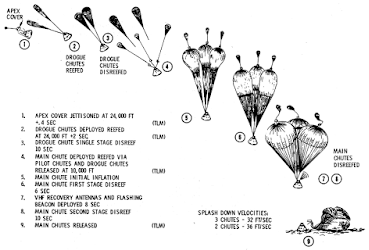
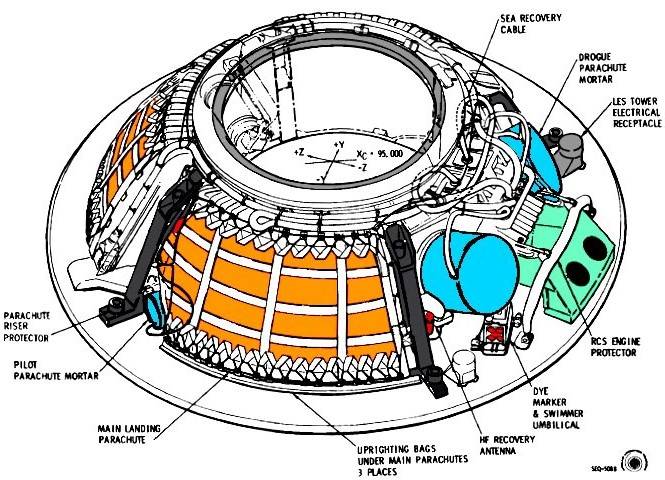
Left: Schematic illustration of the sequence of events of the Apollo Earth Landing
System (ELS). Right: Schematic illustration of the Apollo ELS parachutes
in their stowed configuration.
The overall goal of the ELS was to design and manufacture parachutes to land the Apollo CM on water at about 22 miles per hour. Continual growth in CM weight, increasing from a 1962 design weight of 8,150 pounds to a final weight of 13,000 pounds in 1968, proved to be the most significant challenge during the ELS development process. In particular, changes to the Apollo CM resulting from the January 1967 fire significantly increased its weight and engineers redesigned the parachute system to handle the additional aerodynamic stresses.
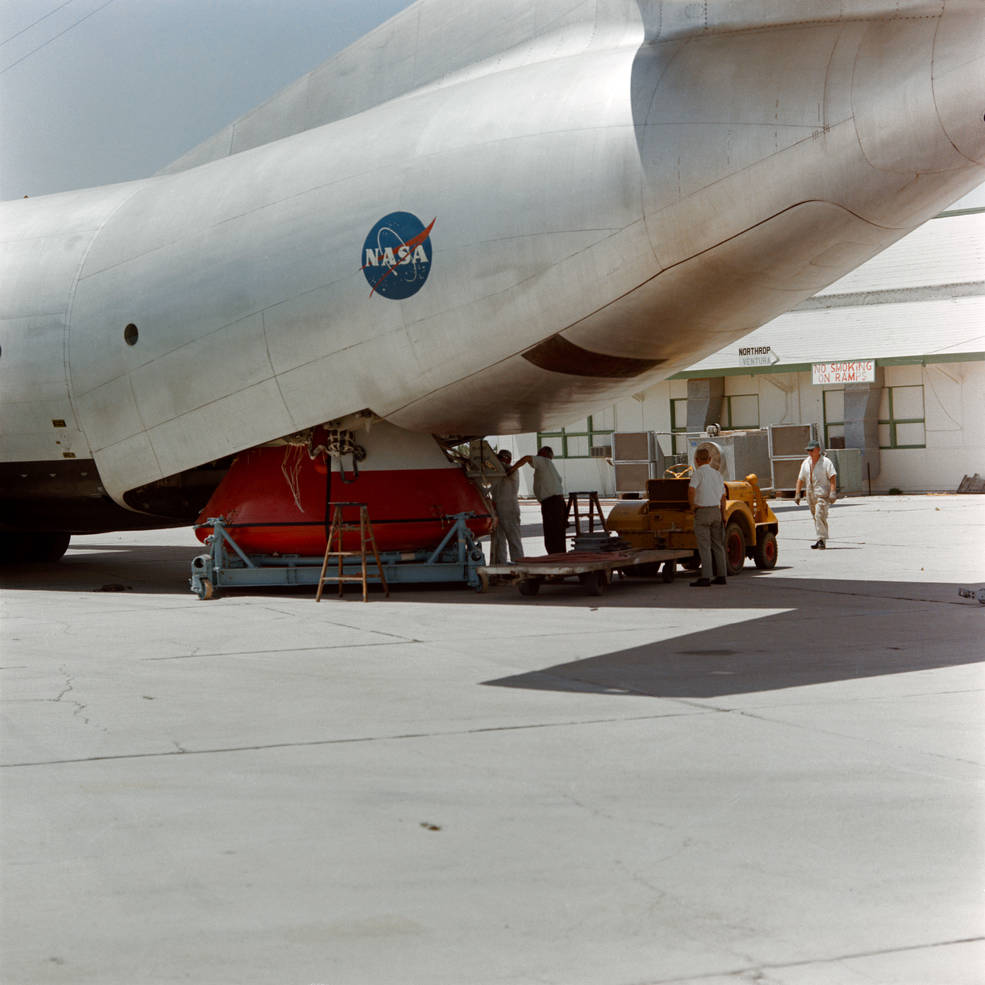
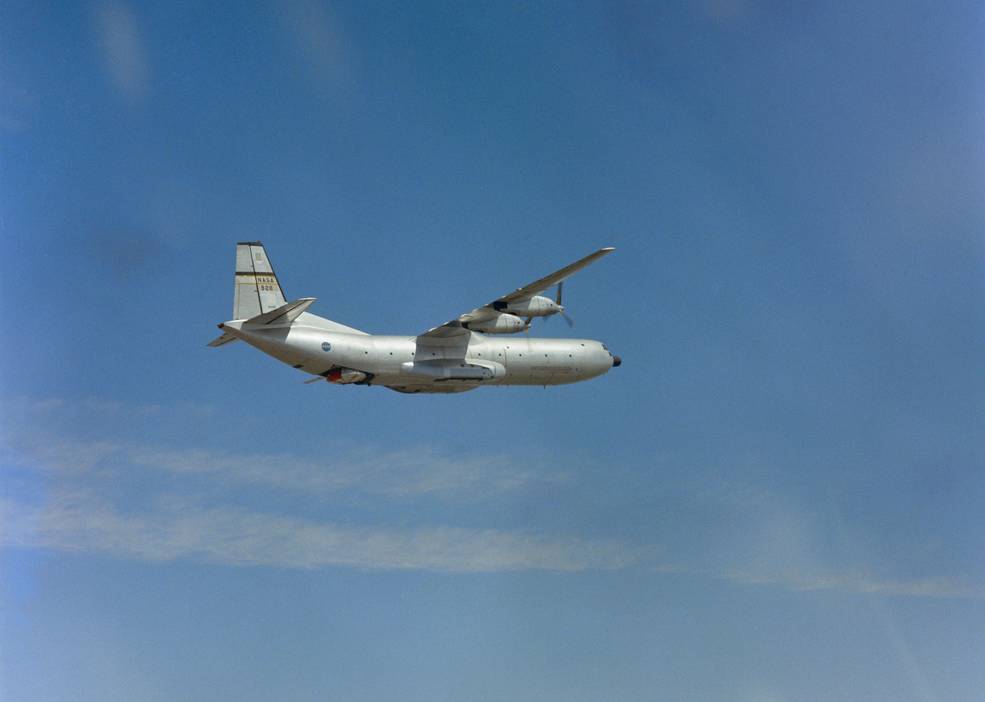
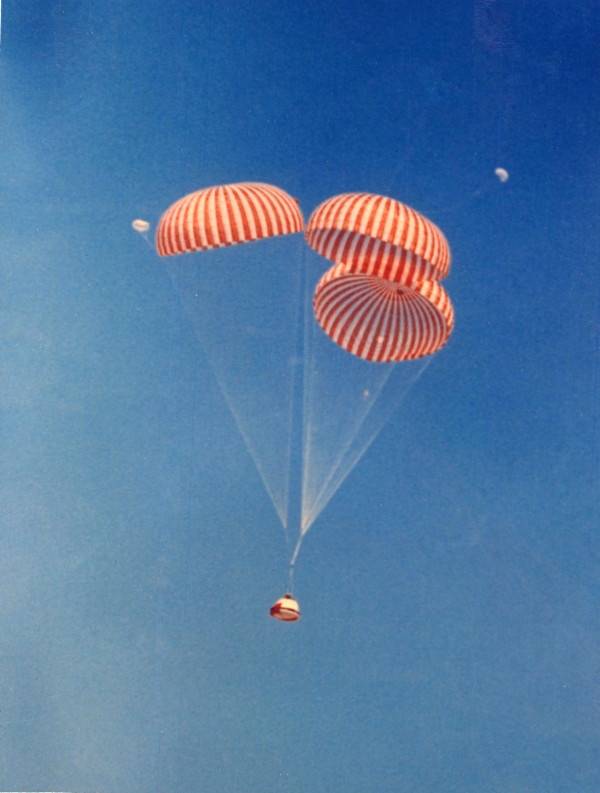
Left: Workers load an Apollo boilerplate Command Module (CM) aboard a modified C-133
Cargomaster aircraft. Middle: A C-133 Cargomaster about to release an Apollo
boilerplate CM for a parachute drop test. Right: The first Apollo boilerplate
CM parachute drop test on May 3, 1963, at El Centro, California.
To test and qualify the Apollo ELS for human space flight, contractor Northrop Ventura conducted drop tests at the Joint Parachute Test Facility, Naval Air Research Facility, in El Centro, California. Following test drops using low-fidelity mockups, the first parachute test using an Apollo boilerplate CM (BP-19A) from a modified U.S. Air Force C-133 Cargomaster aircraft took place on May 3, 1963. This test succeeded, but like in any complex testing program, failures occurred, one of which destroyed a boilerplate capsule. Over the next five years, the contractor completed 13 developmental and 21 qualification drop tests using boilerplate capsules, in addition to multiple drop tests using lower fidelity mockups and wind tunnel and laboratory tests. With the successful completion of the final qualification drop test on July 3, 1968, NASA declared the ELS safe for human missions, removing a constraint placed on flying the first crewed mission, Apollo 7, only three months later. The parachutes for that flight had to be delivered for installation in the CM in November 1967, while the qualification program was still underway, making the testing a high-risk activity with potential to delay the mission.
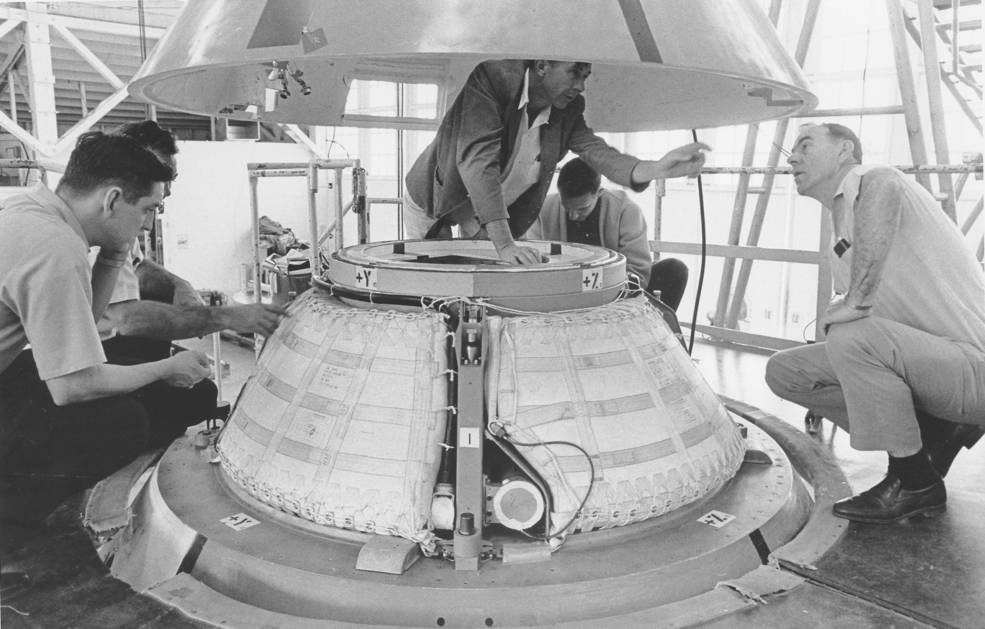
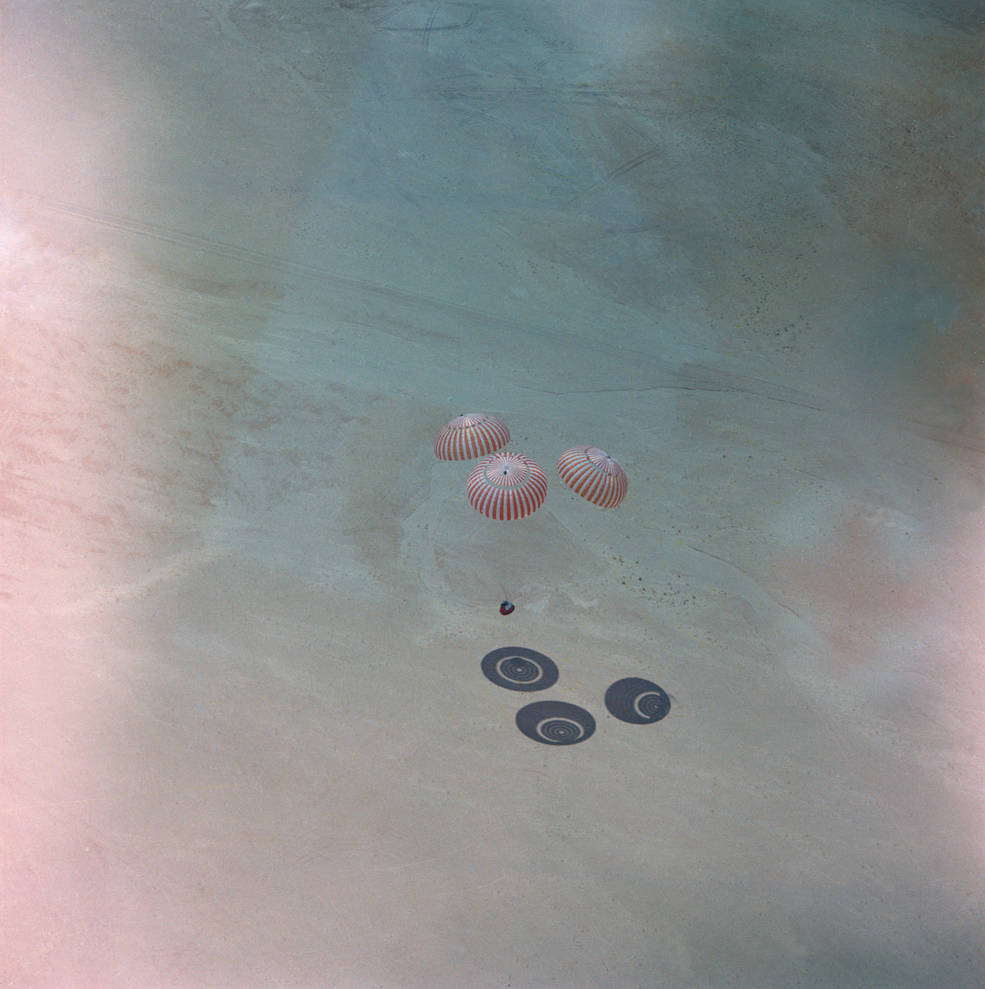
Left: Apollo main parachute packs underneath the forward heat shield. Right: One of the final qualification drop tests at El Centro, California, on June 16, 1968.
In its final configuration, the Apollo ELS consisted of nine parachutes deployed in a complex sequence: one forward heatshield separation parachute, two drogue parachutes, three pilot parachutes, and three main parachutes. During a normal reentry, the sequence began at 24,000 feet with the jettison of the forward heat shield, aided by the deployment of a 7-foot parachute. Two 16.5-foot drogue parachutes opened 1.6 seconds later to provide initial deceleration and stabilization and remained attached to the CM until about 11,000 feet altitude. At drogue disconnect, three 7-foot pilot parachutes deployed, providing sufficient force to extract the main parachute packs, opening the three 83.5-foot main parachutes, which inflated to fully open condition through a two-step reefing process. The three main parachutes slowed the CM to about 22 miles per hour at splashdown, and provided enough margin that should one fail, the splashdown would still be safe for the crew. At the conclusion of four uncrewed and 15 crewed missions, the Apollo ELS performed exceedingly well, with one notable exception. During the Apollo 15 recovery, one of the three main parachutes collapsed, resulting in a slightly higher than anticipated splashdown velocity but no injury to the crew, proving the planned redundancy of the system. The care in the manufacture of the parachutes greatly contributed to their success. Charles Lowry, engineering manager at North American Aviation responsible for the Apollo ELS said of the team of seamstresses who sewed the Apollo spacecraft’s parachutes, “These ladies took great pride in what they did. They all seemed to understand, more than any of us, that their sewing was the last important step in returning these astronauts safely home” The Apollo boilerplate CM BP-19A used in many of the drop tests has been restored and is now on display at the Columbia Memorial Science Center in Downey, California, located on the site where it and all other Apollo spacecraft were built.
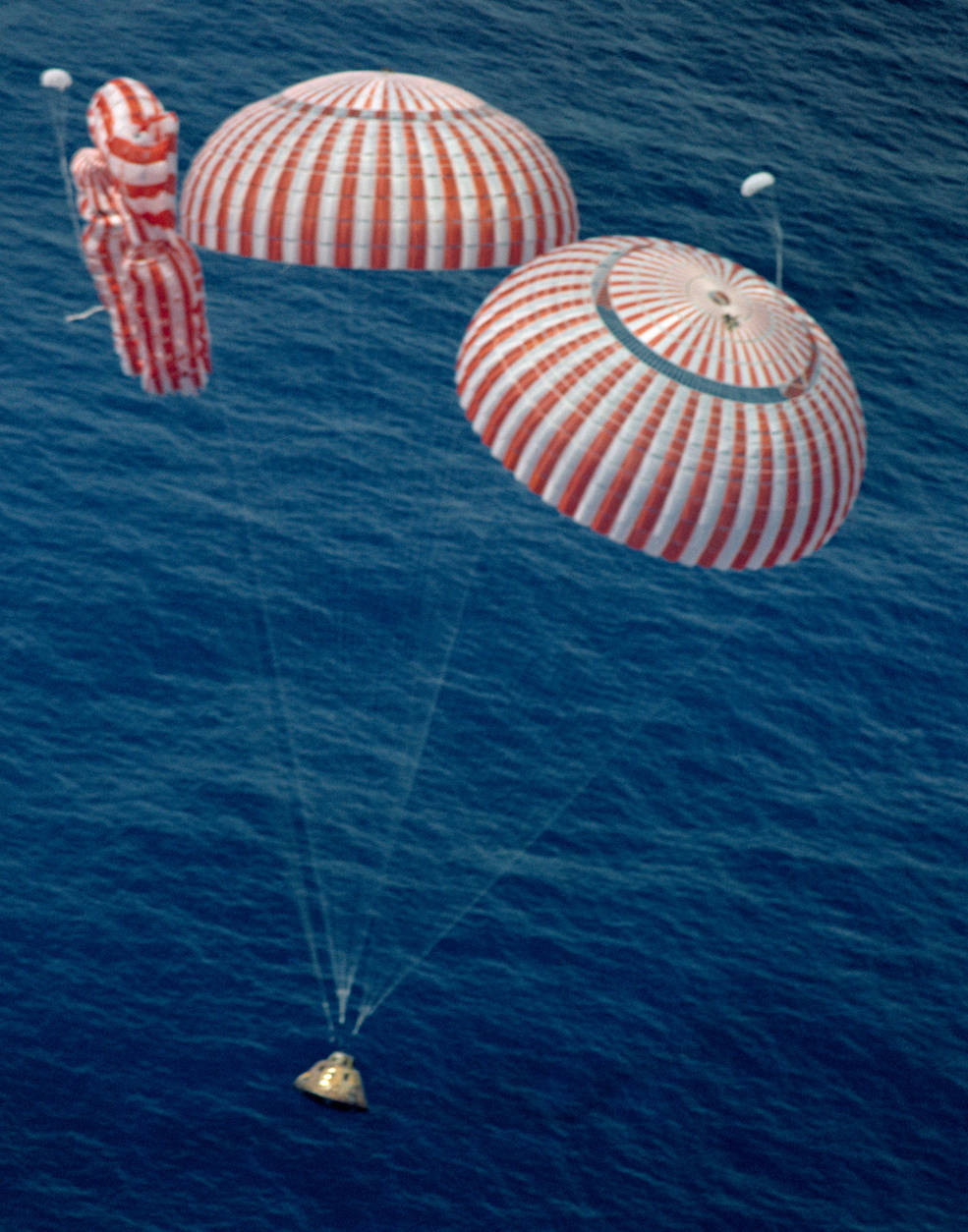
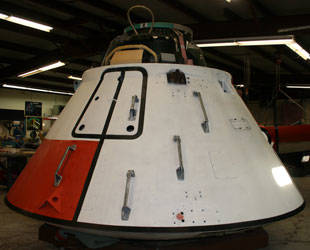
Left: Apollo 15 just moments before splashdown, showing one of the collapsed parachute canopies. Right: Restored Apollo boilerplate Command Module BP-19A on display at the Columbia Memorial Space Center, Downey, California.
In terms of design, testing and qualification, the Apollo ELS successfully met the requirements for safely returning humans from space. Because of the similarity between the Apollo ELS and the recovery system developed for the Orion spacecraft, the latter program chose to follow the Apollo approach including all the lessons learned from the earlier program for human rating its parachute system. NASA’s Commercial Crew Program partners Boeing and SpaceX have extensively studied the well-documented records and experience gained during the Apollo ELS development and testing to increase the reliability and safety of their respective parachute systems.
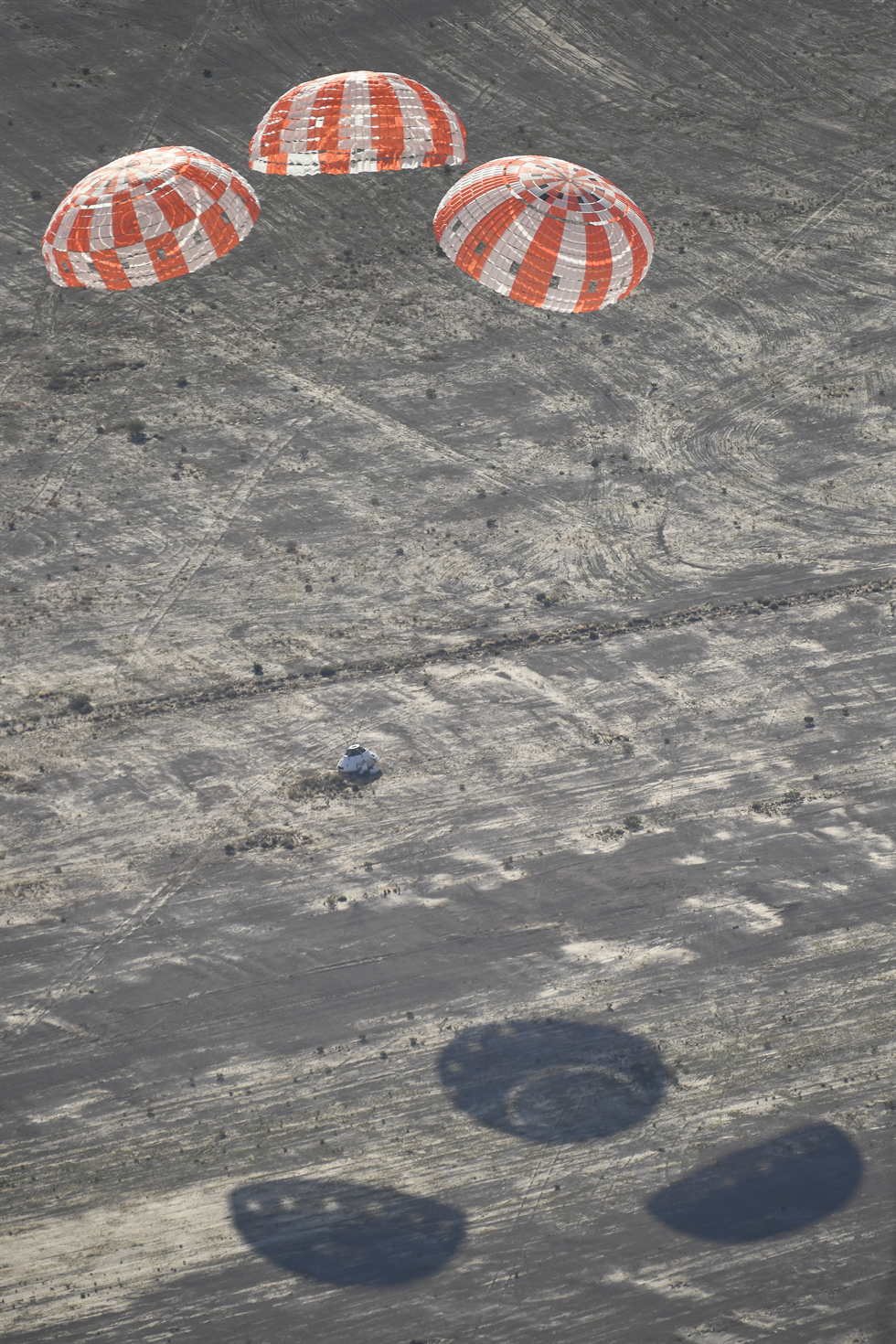
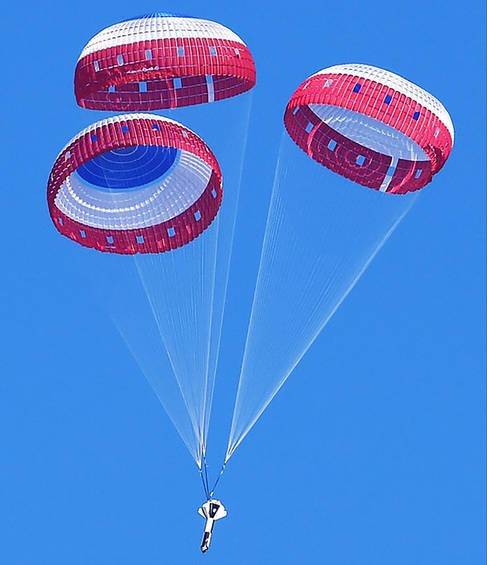
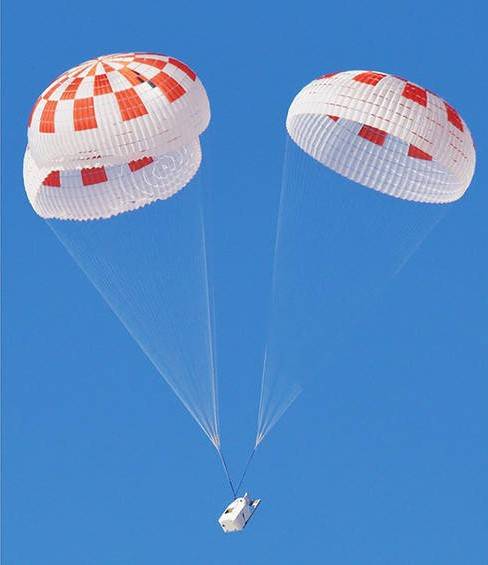
Testing of parachutes for the Orion spacecraft in 2017, left, Boeing Starliner in 2018, middle, and SpaceX Crew Dragon in 2018, right.




























